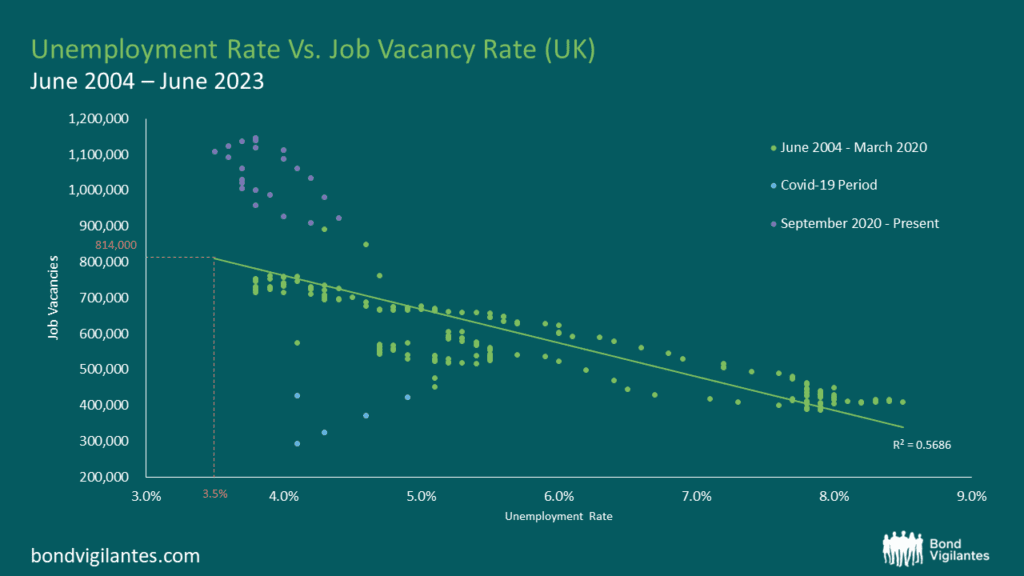3 Artificial intelligence Stocks to Consider as the Trend Heats Up
3 Artificial intelligence Stocks to Consider as the Trend Heats Up


Working the stock market is a data game. Getting the best information, in a timely way, and knowing how to use it, are keys to success. So, here are some numbers to think about. According to industry market research, artificial intelligence companies and products are on the verge of explosive growth. The sector totaled some $10 billion in 2018; by 2025, the companies, products, value-added, and marketing are expected to reach over $125 billion.
You probably already are on it, even if you didn’t realize. AI tech lies behind the growth of digital personal assistants like Alexa and Siri. Most online advertising and pop-ups are powered by AI systems.
All of these systems are going to improve, as engineers and developers fine-tune the coding, create new search apps, and update the underlying hardware. And those technological improvements are going to find their way into stock values. The companies that roll them out, and build on them, are going to get a share of the coming boom.
With this in mind, Wall Street analysts have tapped three lesser-known stocks as primed for gains. They’re an interesting lot, spread across a variety of sectors, each with their own approach to artificial intelligence.
Opening up the TipRanks’ database, we’ve pulled the details on these names, to find out what makes them compelling.
Remark Holdings (MARK)
The first company on our list uses AI to power its network of subsidiaries. Remark Holdings has its hands in many baskets – online retail, digital content delivery, facial recognition, and even China’s somewhat notorious social credit system. The company is headquartered in Las Vegas, with offices in LA, Beijing, Shanghai, and Chengdu.
Remark’s platform product, KanKan, is in use across China, especially in retail. The platform delivers insights on customer behavior, so that retailers can fine-tune operations and bring the right items to the sales floor at the right time. Online, KanKan offers market targeting and credit risk analysis in the fintech sector. And in the public safety niche, Remark’s KanKan brings behavioral analytics to construction sites, restaurants, and roadways.
Like many emerging tech companies, Remark typically operates at a net loss. However, the scale of that loss has been declining in sequential quarters, even during the corona pandemic. EPS in the first quarter this year was (5 cents), while it improved to (4 cents) in Q2. Both of those results beat the forecast. Revenues have been growing steadily, too, from $260,000 in Q4 last year to $431,000 in Q1 this year, to $2.3 million in Q2, the most recent reported. The company’s new bio-safety business, which uses AI to monitor thermal imaging products in casinos, restaurants, hotels, and medical centers – and is based in the US – brought in $1.1 million of that revenue.
Covering the stock for Roth Capital, 5-star analyst Darren Aftahi strikes an upbeat note in his comments on MARK.
“MARK announced it has begun discussions for potential partnerships with larger global enterprise customers for AI software deployments, which could aid scale. Additionally, MARK is continuing to see healthy demand from new customers for thermal-based offerings, while current customers have also expressed interest in additional AI features, which we believe suggests MARK’s solution has staying power with customers.”
In line with this outlook, Aftahi rates MARK a Buy along with a $4.25 price target. This figure suggests that MARK shares have a stellar 425% upside potential from their current price of $1. (To watch Aftahi’s track record, click here)
WISeKey International Holdings (WKEY)
Next on our list is WISeKey, a company in the cybersecurity industry. WKEY develops codes, crypto-algorithms, and chips necessary to the functioning of online digital security. The company does not confine itself to a single pathway; it creates secure digital identification ecosystems using AI, as well as blockchain and IoT systems. WKEY’s customers include marketers, who are looking for brand protection, and financial institutions seeking secure digital systems.
Among WISeKey’s key products are semiconductor chips used in secure microcontrollers and smart card readers. These chips enable AI platforms to speed up transactions while improving safety and privacy. The company is also heavily involved in online brand and digital identity protection. WKEY’s AI enabled coding and algorithms power recognition software that improves security for customers needing signature or facial authentication.
WISeKey finished 1H20 with $8 million in revenues and $16 million in cash reserves, putting the company in a solid position to weather the COVID-19 pandemic.
Covering this stock for H.C. Wainwright, analyst Kevin Dede writes, "In our view, WISeKey represents an asymmetrical risk-reward opportunity heightened by what has proven to be a surprising ability to deliver a constant stream of new technology and solutions with realworld applicability, and perhaps most importantly, accordant customer relationships.”
Dede’s comments are optimistic, as is his Buy rating and $9 price target. This target implies implies 31% upside to the stock for the coming year. (To watch Dede’s track record, click here)
Five9 (FIVN)
The last stock on today’s list, Five9, is a cloud computing firm offering a scalable contact center platform based on intelligent cloud technology. With the corona virus pandemic having further pushed the ever-growing trend towards moving routine business online, Five9’s services have become more important to its customers – and more marketable.
The company has seen slow, steady revenue growth, which reached $99.8 million in Q2, and EPS that consistently beats the forecasts. While the company posted net losses in both Q1 and Q2, earnings in those quarters beat the estimates by 33% and 50% respectively.
Five9 uses AI tech to create a better customer contact platform. The company’s products – on mobile, web, chat, email, or social media – streamline the agent-customer engagement, making inbound and outbound contacts more efficient for the contact center. One agent can handle each of the channels from a single desktop AI interface. The promise – and more importantly, delivery – of better online customer service is a gold mine in today’s environment, and supports the quarterly results.
From Canaccord Genuity, 5-star analyst David Hynes sees Five9 as top-tier when it comes to technology and products.
“One of several important differentiators for Five9 is the firm’s open platform and the best-of-breed choices that it avails to customers. In a continuation of that philosophy, Five9 has announced the availability of Voicestream, an API for streaming agent/caller audio to third-party applications in real-time. This API enables real-time, cloud-to-cloud media streaming so that developers and partners who are focused on AI and other innovative areas can integrate their applications directly into Five9’s platform,” Hynes opined.
Accordingly, Hynes gives FIVN shares a Buy rating, and his $145 price target suggests the stock has a 23% upside potential for the coming 12 months. (To watch Hynes’ track record, click here)
To find good ideas for AI stocks trading at attractive valuations, visit TipRanks’ Best Stocks to Buy, a newly launched tool that unites all of TipRanks’ equity insights.
Disclaimer: The opinions expressed in this article are solely those of the featured analysts. The content is intended to be used for informational purposes only. It is very important to do your own analysis before making any investment.
The post 3 Artificial intelligence Stocks to Consider as the Trend Heats Up appeared first on TipRanks Financial Blog.
International
TikTok Ban Obscures Chinese Stock Gold Rush
No one wants to invest in China right now. The country’s stock market is teetering on the brink of collapse. And it is about to lose its biggest foothold…

No one wants to invest in China right now.
The country’s stock market is teetering on the brink of collapse.
And it is about to lose its biggest foothold in America — TikTok.
Yet, beneath its crumbling economy, military weather balloons and blatant propaganda tools lie some epic opportunities…
…if you have the stomach and the knowledge.
Because as Jim Woods wrote in his newsletter last month:
“China has been so battered for so long, that there is a lot of deep value here for the ‘blood in the ‘’red’’ streets’ investors.”
And boy was he right.
However, this battle-tested veteran didn’t recommend buying individual Chinese stocks.
He was more interested in the exchange-traded funds (ETFs) like the CHIQ.
And here’s why…
Predictable Manipulation
China’s heavy-handed approach creates gaping economic inefficiencies.
When markets falter, President Xi calls on his “national team” to prop up prices.
$17 billion flowed into index-tracking funds in January as the Hang Sang fell over 13% while the CSI dropped over 7%.
Jim Woods saw this coming from a mile away.
In late February, he highlighted the Chinese ETF CHIQ in late February, which has rallied rather nicely since then.
This ETF focuses on the Chinese consumer, a recent passion project for the central government.
You see, around 2018, when President Xi decided to smother his own economy, notable shifts were already taking place.
The once burgeoning retail market had slowed markedly. Developers left cities abandoned, including weird copies of Paris (Tianducheng) and England.
Source: Shutterstock
So, Xi and co. shifted the focus to the consumer… which went terribly.
For starters, a lot of the consumer wealth was tied up in real estate.
Then you had a growing population of unemployed younger adults who didn’t have any money to spend.
Once the pandemic hit, everything collapsed.
That’s why it took China far longer to recover even a sliver of its former economy.
While it’s not the growth engine of the early 2000s, the old girl still has some life left in it.
As Jim pointed out, China’s consumer spending rebounded nicely in Q4 2023.

Source: National Bureau of Statistics of China
Combined with looser central bank policy, it was only a matter of time before Chinese stocks caught a lift.
The resurgence may be largely tied to China’s desire to travel. After all, its people have been cooped up longer than any other country.
But make no mistake, this doesn’t make China a long-term investment.
Beyond what most people understand about China’s politics, there’s a little-known fact about how they treat foreign investors.
Money in. Nothing out.
When we buy a stock, we’re taking partial ownership in that company. This entitles us to a portion of the profits (or assets).
That doesn’t happen with Chinese companies.
American depository receipts (ADRs) aren’t actual shares of a company. It’s a note that the intermediary ties to shares of the company they own overseas.
So, we can only own Chinese companies indirectly.
But there’s another key feature you probably weren’t aware of.
Many of the Chinese companies we, as Americans invest in, don’t pay dividends. In fact, a much smaller percentage of Chinese companies pay any dividends.
Alibaba is a perfect example.
Despite generating billions of dollars in cash every year, it doesn’t pay dividends.
What do its managers do with the money?
Other than squirreling away $80 billion on its balance sheets, they do share buybacks.
Plenty of investors will tell you that’s even better than dividends.
But you have no legal ownership rights in China. So, what is that ADR in reality?
We’d argue nothing but paper profits at best, and air at worst.
That’s why it’s flat-out dangerous to own shares of individual Chinese companies long-term.
Any one of them can be nationalized at any moment.
Chinese ETFs reduce that risk through diversification, similar to junk bond funds.
Short of an all-out ban, like between the United States and Russia, the majority of the ETF holdings should remain intact.
Opportunistic Investing
If China is so unstable, and capable of changing at a moment’s notice, how can investors uncover pockets of value?
As Jim showed with his ETF selection, you can have some sector or thematic idea so long as you have the data to support it.
China, like any large institution, isn’t going to change its broad economic policies overnight.
As long as you study the general movements of the government, you can steer clear of the catastrophic zones and towards the diamond caves.
Because when things look THIS bad, you know the opportunities are even juicier.
But rather than try to run this maze solo, take this opportunity to check out Jim Woods’ latest report on China.
In it, he details the broad economic themes driving the Chinese government, and how to exploit them for gain.
Click here to explore Jim Woods’ report.
The post TikTok Ban Obscures Chinese Stock Gold Rush appeared first on Stock Investor.
stocks pandemic real estate etf consumer spending gold russia chinaInternational
The Great Escape… of UK Unemployment Reporting
https://bondvigilantes.com/wp-content/uploads/2024/03/1-the-great-escape-of-uk-unemployment-reporting-1024×576.pngThe Bank of England Monetary Policy Committee…

The Bank of England Monetary Policy Committee potentially has a problem: it requires data to make its labour market forecasts and assessments, but the unemployment statistics have become increasingly unreliable. This is because the Labour Force Survey participation rate (on which the unemployment figures are based) has fallen below 50% since 2018 and has been as low as 15% recently[1]. What is the solution to this difficult measurement problem? An answer can be found in the classic war film, The Great Escape.
In 1943, the Escape Committee of Stalag Luft III was tasked with digging a tunnel to freedom. Unfortunately, they had a problem. They needed to measure the distance between one of the prisoner’s huts and the forest beyond the prison perimeter, but they had no reliable tools to measure this critical variable. Fortunately they had two mathematicians within the group who came up with a method to gauge the distance to the forest so that the tunnel would be long enough to ensure escape without detection. The idea was to eyeball the distance using a 20 foot tree for scale (the tree was the one ‘accurate’ measurement around which they could work with). They got individual prisoners to gauge the distance from the hut to the tree and then averaged all of the estimates. The critical distance measure was therefore the average of a large sample size of guesstimates. Fortunately, it more or less worked. Happily, modern economists have an equivalent to rely on in the area of unemployment. Their version of the Stalag Luft III tree strategy is something called the Beveridge Curve.
The Beveridge Curve is simply an observed relationship between an economy’s unemployment rate and its job vacancy rate at the same point in time. An excellent exposition can be found in the Bond Vigilantes archive[2]. When you plot the two variables against one another over a given period, the data points disclose a curve. This curve shows us that when unemployment increases, job vacancies decrease and vice versa. I have plotted the current curve below using the available data from the Office for National Statistics (ONS)[3]. The bottom left quadrant of the graph (the blue dots) relate to the Covid-19 era and the top left quadrant (the purple dots) represent the last 2 years’ worth of data. The green dots represent the remaining data from July 2004 to June 2023.
Source: Office for National Statistics, Dataset JP9Z & UNEM

Source: Office for National Statistics, Dataset JP9Z & UNEM
From these charts and new data from the ONS, we can observe that in the UK, the level of unemployment is increasing and that the job vacancy rate is decreasing. At face value, this suggests that current Bank of England monetary policy is working and that the inflation rate is slowing as the economy cools. One could argue that we are on track for a reasonably soft landing. Nothing new so far.
Things become more interesting when we consider the Beveridge Curve in conjunction with the most recent job vacancy data. We are told that there are now 814,000 job vacancies as of the 31st December 2023[4]. Ordinarily, we would use the curve and clearly be able to extrapolate from the Job Vacancy data what our Unemployment figure might be. However, we also know that the current unemployment data is unreliable, which makes this harder. Using our model inclusive of data oddities, we could extrapolate that with 814,000 job vacancies, we might expect an unemployment rate of around 3.5%. Yet, we know that our unemployment figures are unreliable so the question therefore is, how big an increase in unemployment are we likely to see given what we know about job vacancies?
In order to estimate the magnitude of the rise in unemployment, we need to look further afield. If we study the levels of economic inactivity in the UK, we can observe that they have remained stationary at 22%[5] for the last decade. We can also see that the population of the UK has risen over the same period by around 5.91%[6]. Further, we know that the Labour Force Survey (LFS) samples 40,000 households per quarter to obtain its data, but of late has had a response rate of only 15% (6,000 households). Therefore a critical question for policy makers is what is happening with the 85%, the non-responders?
Given the small sample size, it is entirely possible that the LFS suffered survey bias that is being erroneously weighted away. In other words, the LFS compensates for the paucity of response data by accessing other regional population statistics as a legitimate part of their methodology. The problems of non-responders are being addressed in upcoming LFS releases but for the time being, the data is not as clear as it ought to be. With such a small sample size, it seems possible – indeed probable – that unemployment levels are being underreported. This would explain why the current unemployment rate of 3.8%[7] is dramatically lower than the historic average of 6.7% (1971-2023). We see further evidence for this in the forecasts of the UK’s unemployment rate on Bloomberg which have been consistently above the actual levels for the last few published data points. So whilst the published headline figures might be looking reasonable, the underlying story looks like it could be hiding something more sinister.
Through it all, the Beveridge Curve remains a reasonable template. Job vacancies are definitely falling, so we should expect to see unemployment rising. Like the Stalag Luft III measurement solution, the Beveridge Curve offers a constructive way out of our present statistical dilemma. That being said, analogies can only be taken so far. Unfortunately for the inmates of Stalag Luft III, the calculation didn’t quite work and the tunnel came up short. No one actually made a Great Escape. What does this mean for UK unemployment data? Time may tell.
[1] The UK’s ‘official’ labour data is becoming a nonsense (harvard.edu)
[2] https://bondvigilantes.com/blog/2013/11/a-shifting-beveridge-curve-does-the-us-have-a-long-term-structural-unemployment-problem/
[3] Unemployment – Office for National Statistics (ons.gov.uk)
[4] https://www.ons.gov.uk/employmentandlabourmarket/peopleinwork/employmentandemployeetypes/timeseries/jp9z/unem
[5] https://www.ethnicity-facts-figures.service.gov.uk/work-pay-and-benefits/unemployment-and-economic-inactivity/economic-inactivity/latest/#:~:text=data%20shows%20that%3A-,22%25%20of%20working%20age%20people%20in%20England%2C%20Scotland%20and%20Wales,for%20a%20job)%20in%202022
[6] https://www.ons.gov.uk/peoplepopulationandcommunity/populationandmigration/populationestimates/bulletins/annualmidyearpopulationestimates/mid2021
[7] https://www.ons.gov.uk/employmentandlabourmarket/peoplenotinwork/unemployment
unemployment covid-19 monetary policy unemployment ukInternational
Germany Is Running Out Of Money And Debt Levels Are Exploding, Finance Minister Warns
Germany Is Running Out Of Money And Debt Levels Are Exploding, Finance Minister Warns
By John Cody of Remix News
German Finance Minister…

By John Cody of Remix News
German Finance Minister Christian Lindner is warning his own government that state finances are quickly growing out of hand, and the government needs to change course and implement austerity measures. However, the dispute over spending is only expected to escalate, with budget shortfalls causing open clashes among the three-way left-liberal coalition running the country.
With negotiations kicking off for the 2025 budget, much is at stake. However, the picture has been complicated after the country’s top court ruled that the government could not shift €60 billion in money earmarked for the coronavirus crisis to other areas of the budget, with the court noting that the move was unconstitutional.
Since then, the government has been in crisis mode, and sought to cut the budget in a number of areas, including against the country’s farmers. Those cuts already sparked mass protests, showcasing how delicate the situation remains for the government.

Lindner, whose party has taken a beating in the polls, is desperate to create some distance from his coalition partners and save his party from electoral disaster. The finance minster says the financial picture facing Germany is dire, and that the budget shortfall will only grow in the coming years if measures are not taken to rein in spending.
“In an unfavorable scenario, the increasing financing deficits lead to an increase in debt in relation to economic output to around 345 percent in the long term,” reads the Sustainability Report released by his office. “In a favorable scenario, the rate will rise to around 140 percent of gross domestic product by 2070.”
Under EU law, Germany has limited its debt levels to 60 percent of economic output, which requires dramatic savings. A huge factor is Germany’s rapidly aging population, with a debt explosion on the horizon as more and more citizens head into retirement while tax revenues shrink and the social welfare system grows — in part due to the country’s exploding immigrant population.
Lindner’s partners, the Greens and Social Democrats (SPD), are loath to cut spending further, as this will harm their electoral chances. In fact, Labor Minister Hubertus Heil is pushing for a new pension package that will add billions to the country’s debt, which remarkably, Lindner also supports.
Continue reading at rmx.news
-

 Uncategorized4 weeks ago
Uncategorized4 weeks agoAll Of The Elements Are In Place For An Economic Crisis Of Staggering Proportions
-

 International1 week ago
International1 week agoEyePoint poaches medical chief from Apellis; Sandoz CFO, longtime BioNTech exec to retire
-

 Spread & Containment5 days ago
Spread & Containment5 days agoIFM’s Hat Trick and Reflections On Option-To-Buy M&A
-

 Uncategorized1 month ago
Uncategorized1 month agoCalifornia Counties Could Be Forced To Pay $300 Million To Cover COVID-Era Program
-

 Uncategorized3 weeks ago
Uncategorized3 weeks agoApparel Retailer Express Moving Toward Bankruptcy
-

 Uncategorized1 month ago
Uncategorized1 month agoIndustrial Production Decreased 0.1% in January
-

 International1 week ago
International1 week agoWalmart launches clever answer to Target’s new membership program
-

 Uncategorized1 month ago
Uncategorized1 month agoRFK Jr: The Wuhan Cover-Up & The Rise Of The Biowarfare-Industrial Complex
























